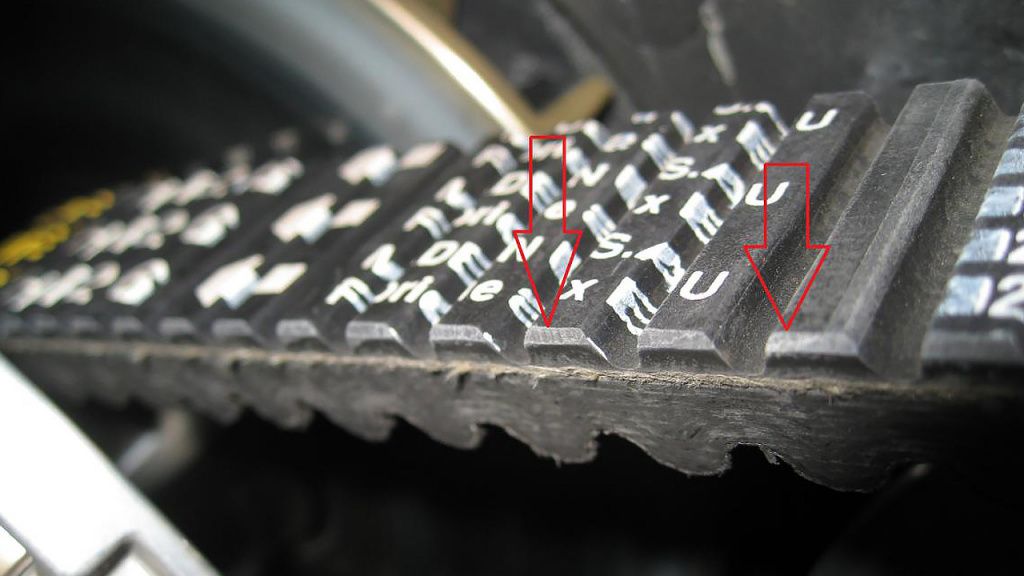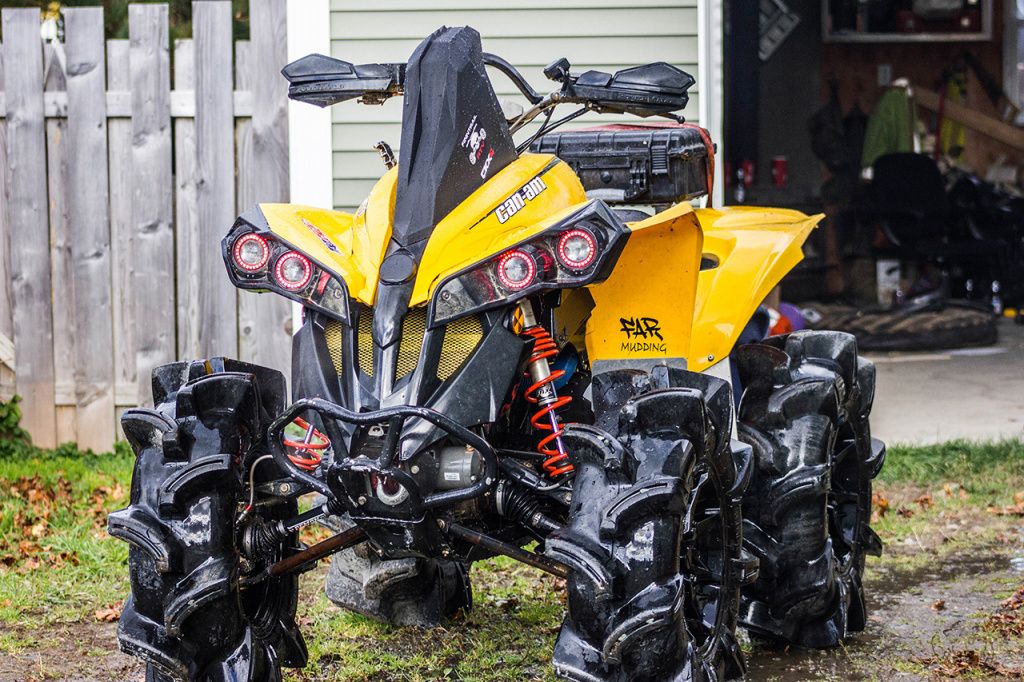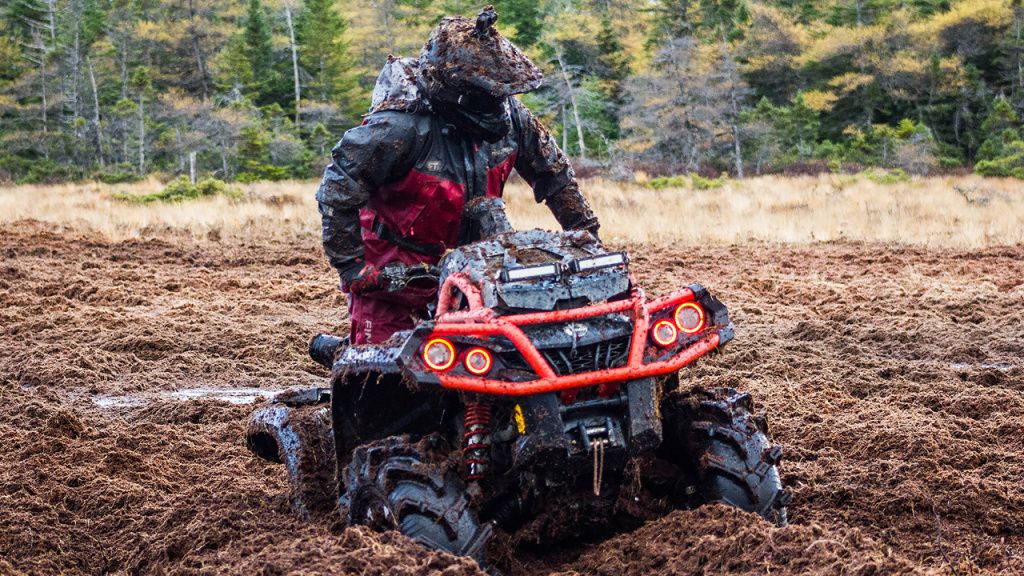How to Fix Your CVT Belt Squealing
A noisy CVT belt is irritating and potentially damaging to your ATV but fixing it doesn't have to be a mystery. Read this post to learn how to fix CVT belt squealing.
Before you begin, you should know to never to run an ATV with the clutch cover off. This includes riding it, starting the engine, or turning on the key. It is both dangerous to you and has the potential to mess up various components of your ATV.
Can I Ride My ATV With a Squealing CVT Belt?
That depends on the cause and severity of the problem. Riding with a squealing CVT belt could cause damage to different parts of the ATV or make the ATV difficult to steer or inoperable.
What Causes CVT Belt Squealing?
It's easiest to cover the various causes by starting with the symptom you're experiencing.
The belt squeals at idle, but the noise disappears when applying throttle

We'll start here because this is the most common symptom associated with CVT belt squealing.
When your ATV is in gear and idling, the primary clutch spins freely and the clutch sheaves don't touch the belt. While applying throttle, the gap between the clutch sheaves grows tighter so it can grab and spin the belt.
The squeal occurs when the sheaves touch the belt at a time they shouldn't or a way they shouldn't and cause friction between rubber and metal.
You may also notice that the ATV is hard to shift or that the squealing sound stops when you shift into neutral.
There are many causes for this problem. We'll go over them below.
The belt is moving in the wrong direction
The belt has to be installed a certain way to move in the right direction. Make sure you can read the part number on the belt when you're standing beside the ATV. If it's upside-down, it's backwards.
The good news is that this has an easy fix. Just take the belt off, turn it around, and reinstall it.
The belt is too wide
A belt that is only slightly too big can cause friction and squealing.
If that's the case, you can fix it by using an OEM belt to make sure you have the right size belt. It is very easy to purchase aftermarket belts in a wrong size. If you know your belt is the right size, but there is no other reason for the squealing, it is possible that you just need to give the belt some time to break in. A certain number of riding miles is required to break in a belt. You should be able to discover it for yours in the manual or online.
The clearance on the primary clutch is off
This usually occurs when you or a previous owner tinkered with the clutch shims to make a previous belt work better. You install a new belt, and you experience belt squealing.
You can add or remove shims to fix this problem. If you don't want to do it yourself, you can take the clutch assembly to a dealer to do it for you.
Stuck or worn primary clutch bearing
When your ATV is at idle, the clutch sheaves are supposed to be resting against a bearing outside the clutch shaft. If there's something wrong with it, it's stuck or worn out, you may start getting friction on your CVT belt and squealing.
While the engine is off, remove the clutch cover and the drive belt. Locate the center bearing. Grab the center bearing with two fingers and see how it turns. If it drags, grinds, or is stuck, you will need to clean or replace it depending on the cause of the issue. Sand, dirt, rust, and wear can interfere with the bearing.
Dirty clutches
If the clutches are clogged with dirt from the trail or from worn components, they won't work correctly.
Put on a dust mask. While the engine is off, remove the clutch cover.
You can clean the clutches with an air compressor or take the clutch assembly apart for a deeper clean, if needed.
Consider buying "built to last a lifetime" waders for your better performance and safety during the dirtiest rides.
Worn clutch components
Worn rollers, bushings, or helix inside the clutches can make the sheaves perform incorrectly.
You'll have to replace the worn part to fix this problem. This can be done at home or by a dealer.
Bad Motor Mounts
The clutches can be out of alignment because the motor mounts are worn or broken. Replace these to fix the problem.
The Belt Squeals Only When the ATV Starts Moving

This problem is usually caused by belt deflection issues. Belt deflection is the distance the belt deflects from its neutral position when it is pushed down on. If your belt has excessive deflection, or is loose, it will fall into the secondary clutch while trying to climb in the primary. You will likely experience a bogged down engine at take-off also. The belt's deflection can also be too tight.
You will begin fixing this by measuring the belt deflection. You can do it by hand, and it may help with many squeals, but some more stubborn ones will require you to measure it with a scale.
While the engine is off, take off the clutch cover. Place a ruler between the primary and secondary clutch.
Press on the belt in the middle of this point with one finger or a scale until it is lightly tensioned.
Measure the distance between the ruler and the belt. This is its deflection. You'll have to check your owners' manual to see what the deflection is supposed to be for your ATV.
To adjust belt deflection, you will need to turn the adjustment screw on the secondary clutch or add or remove spacer shims in the secondary clutch.
The Belt Squeals When the ATV is Moving

Some noises in the CVT clutch are not odd when moving, particularly if you've installed a snorkel. If the noise has inexplicably increased or is excessively loud, you probably have one of the issues below.
The clutch sheaves are dirty
You may have dirty sheaves if you didn't clean a new belt when installing it or if dirt accumulated on it.
While the engine is off, remove the clutch cover and the drive belt. You can then clean the belt with a scouring pad and hot soapy water. It's best to finish cleaning and dry the belt by blowing it with compressed air. You can then reinstall the belt and the clutch cover.
Inadequate clutch springs
You'll likely have this issue if you upgraded your tires and didn't upgrade your clutch springs at the same time. Bigger tires put extra stress on the belt, so if you upgrade your tires more than an inch in size, you need to upgrade to stiffer clutch springs. You can do that now to fix this problem.
How to Quiet a Squealing Belt
The best, permanent way to quiet a squeaky belt is to fix the cause of the squealing.
As a temporary solution, you can apply a belt conditioner, also called a belt dressing. This will make your belt more supple and less likely to squeal. It is possible for them to make your belt layers separate, so don't use them excessively or for minor squeals that can be tolerated.
You can also rub some bar soap on the belt as a temporary way to lubricate and clean the belt and pulley attached to it.











